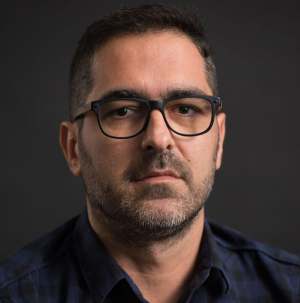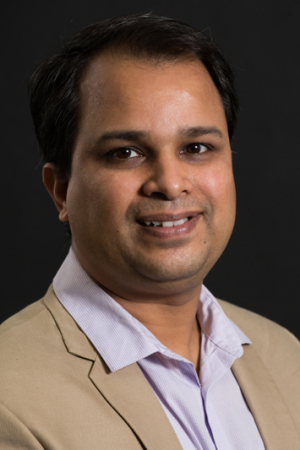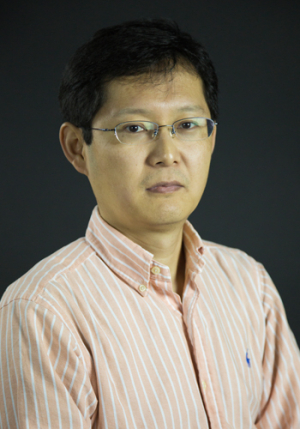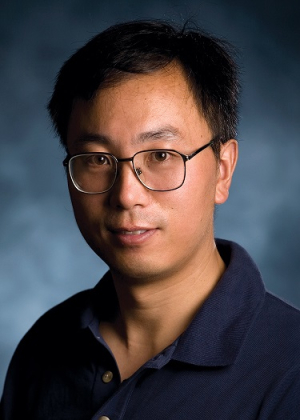Three mechanical engineering professors at the UH Cullen College of Engineering won grants from the National Science Foundation totaling $867,309. These funds enable professors to work on critical research on various topics that have the potential of impacting a broad range of industries – from aerospace to nanorobotics.
These three-year grants extend from 2019 to 2022.
Here are the details of the award-winning projects:
Theocharis Baxevanis
Assistant Professor
Project Title: Collaborative Research: Fatigue Crack Formation and Growth in the Presence of Reversible Martensitic Transformation in High Temperature Shape Memory Alloys
Amount: $245,693
Shape Memory Alloys or SMAs can recover their original shape upon heating after being heavily deformed at low temperatures. A reversible change of their crystal structure – a phase transformation – allows for the shape memory effect.
“Recently discovered SMAs that undergo phase transformation at high temperatures, named High-Temperature Shape Memory Alloys (HTSMAs), have inspired significant interest for innovative actuation applications in the aeronautics, energy conversion and transportation, and automotive industries,” said Theocharis Baxevanis, assistant professor of mechanical engineering at the UH Cullen College of Engineering.
Actuators are devices that cause other devices or machines, such as the wing flap on an airplane, to operate or move.
“SMA actuators do not use motors or magnetic fields to generate force, are smaller and lighter than the conventional servo-hydraulic/electromagnetic actuators,” Baxevanis added. “They can perform the functions of several materials and parts simultaneously, thus simplifying device design, resulting in fewer parts to break or wear down, and lower cost and maintenance.”
However, repeated actuation fatigues in SMAs result in gradual accumulation of defects and degradation of its properties. Confidence on the fatigue response of SMAs is required before main stream applications become a reality.
The main goal of the project is to identify and examine the life-controlling microstructural fatigue mechanisms and mechanics for the fatigue reliability assessment of HTSMAs.
“The idea is to eventually provide guidelines for the design of a HTSMA microstructure for optimum resistance to fatigue crack formation and early growth and in turn to prolonged service life,” Baxevanis said. “While HTSMAs will serve as model materials, the developed models and experimental findings will be directly transferable to other phase transforming materials.”
Baxevanis is the principal investigator (PI) and UH is the lead institution. Co-PI is Ibrahim Karaman from the Texas A&M Engineering Experiment Station.
The researchers hope the key outcomes of the proposed work to drive the fabrication and processing of HTSMAs that will enable the development and design of innovative and reliable SMA actuators.
Baxevanis is already involved in a NASA funded project that aims to use HTSMA actuators for designing a commercially-viable supersonic aircraft that can change shape during flight to reduce noise and increase efficiency. To read that story, click here.
Shailendra Joshi
Bill D. Cook Assistant Professor
Project Title: Collaborative Research: Multiscale Modeling of Damage Tolerance in Hexagonal Materials
Amount: $243, 230
Hexagonal close-packed (HCP) materials are widely employed in industrial and biomedical sectors – as fuel rods in nuclear power plants (zirconium alloys); automotive components (magnesium alloys); medical stents and dental applications (titanium and magnesium alloys); compressor and turbine disks and blades in power generation systems and jet engines (titanium alloys); in cryogenic fuel tanks and space telescope mirrors (beryllium alloys) among other things.
“HCP materials are strong candidates in increasing number of applications that span a broad spectrum of engineering fields. For instance, magnesium alloys are perhaps the lightest structural metals that are promising candidates for use in the automotive industry,” said Shailendra Joshi, Bill D. Cook assistant professor in mechanical engineering at the Cullen College. “They are also biodegradable, which make them interesting for certain biomedical applications.”
In these, and similar applications, projections of strength and durability are critical in successful functionality. Yet, there are currently no material modeling frameworks to base robust engineering projections regarding their durability and damage tolerance.
“A clear scientific understanding of the underlying processes of strengthening and deformation is lacking, which stymies our ability to design HCP materials with the desired strength and damage tolerance that is needed,” Joshi said.
The complex crystallography of these materials gives rise to intricate coupling between fine-scale mechanisms of plasticity that include slip and twinning modes of deformation. These mechanisms of plastic deformation are known to influence macroscopic damage and ultimate failure, but their precise roles are not understood, he explained.
This project aims at predictive modeling of residual strength and ductility limits of HCP materials. If successful, the proposed research would advance the life assessment procedures and avoid material waste in processing and manufacturing operations.
Joshi is the principal investigator (PI) and UH is the lead institution. Co-PI is Ahmed-Amine Benzerga from the Texas A&M Engineering Experiment Station.
Dong Liu
Associate Professor
Project Title: Enabling Light-Driven Microfluidics with Laser Streaming
Amount: $378, 386
Microfluidics, which deals with both the science which studies the behavior of fluids through micro-channels, and the technology of manufacturing microminiaturized devices containing chambers and tunnels through which fluids flow or are confined, has led to significant advances in a few niche areas in applied science and engineering. For lab-on-a-chip and point-of-care diagnostic applications alone, the global market will reach $8.78 billion in 2021.
At present, the manufacturing approach for microfluidics requires the performance factors, physical layout and fabrication processes to be considered simultaneously for all sensors and actuators integrated in a single chip. Modifying one portion of the device often entails redesigning the entire architecture. Consequently, most microfluidic devices are custom built and cannot be translated to low-cost scalable manufacturing.
“Light-driven microfluidics, where light serves as both sensor and actuator, promises a radical solution: it needs neither immobilized on-chip actuators nor physical connections to external electric/hydraulic peripherals and provides robustness and versatility that are unavailable in standard microfluidics,” said Dong Liu, associate professor of mechanical engineering and principal investigator on the project.
“Moreover, light-driven devices can be reconfigured at will to adapt to changing operating conditions and new applications,” he added.
Unfortunately, the photo-actuating mechanisms – driven by radiation pressure or light-induced capillary effects – demand the presence of refractive index inhomogeneities (such as local density fluctuations in colloids and phase-separated surfactant solutions) to scatter light or multiphasic interfaces (as in bubbles and droplets) to generate interfacial tension gradient, Liu said. This excludes the use of most common liquids, such as water and many organic solvents, as the working fluid.
As such, the “all-optical fluidic chip” concept envisioned more than a decade ago has yet to be materialized, he said.
This research project, which is built on Liu’s previous work on laser streaming, aims to eradicate this fundamental limitation by establishing a new microfluidic principle.
“The proposed laser streaming will emancipate light-driven microfluidics from its fundamental constraints and open a new pathway enabling all-optical devices, in which the microfluidic functions are controlled by light stimulation and can be reconfigured dynamically for optimal performance,” Liu said.
Laser streaming capitalizes on the synergy between laser-induced ultrasonic waves and acoustic streaming to convert the light energy into the mechanical momentum of a liquid stream, he explained. By modulating the laser beam, contactless and dynamic light actuation can be realized in a fully reconfigurable manner in terms of flow speed, spatial extension, time span, position and parallel multi-actuation.
Liu hopes his research will lay the scientific foundation for laser streaming by elucidating the underlying physics via experimental characterization and multiphysics modeling.
“The resulting light-driven microfluidic platforms will have unprecedented flexibility, robustness and parallelization,” he said. “This will greatly influence various industries that have benefited from microfluidics, to name a few, from biology, medicine, space exploration to microelectronics cooling.”
More remotely, laser streaming will also enrich the arsenals of pulse laser propulsion (PLP) in air and liquid and light-driven micro/nanorobotics, Liu added.
His co-PI on the project is Jiming Bao, associate professor of electrical and computer engineering at the Cullen College.



